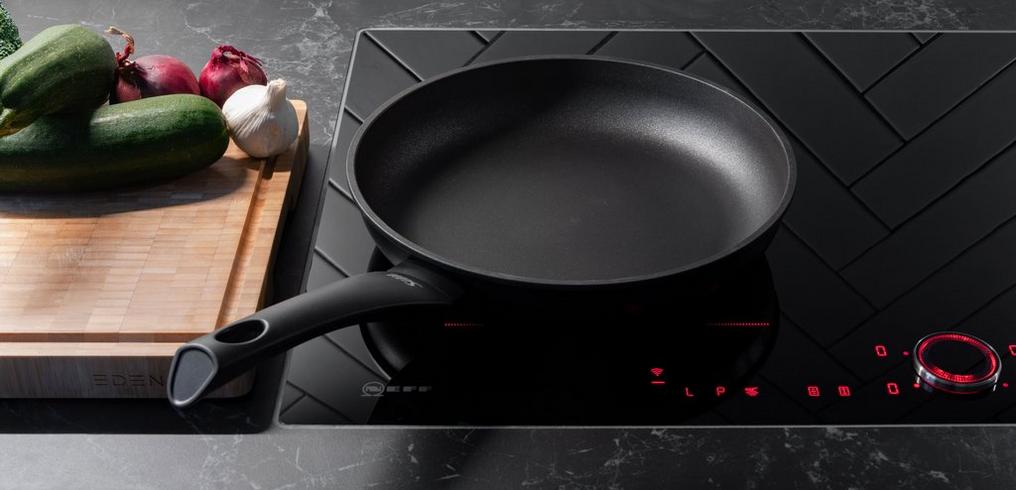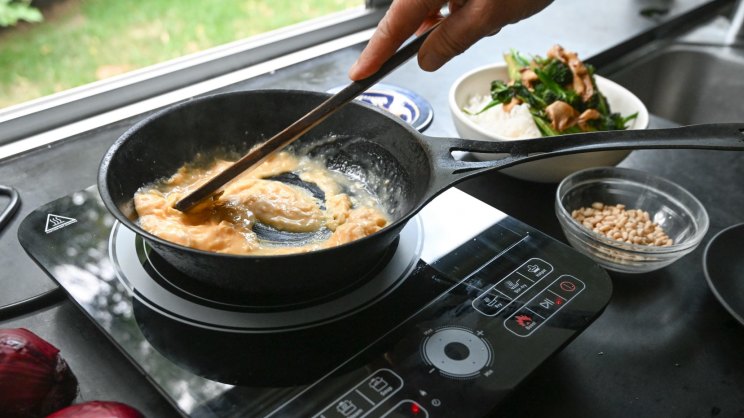In the bustling world of professional kitchens, the art of seasoning cast iron is a revered tradition. This enduring culinary practice ensures that your trusty skillet or pan performs optimally, especially when utilizing modern cooking technologies like induction. In this article, we'll delve into the specifics of cast iron seasoning video induction specific techniques, offering insights tailored for kitchen professionals who demand nothing but the best from their cookware.

Why Seasoning Matters for Induction Cooking
Seasoning your cast iron is crucial, not just for maintaining its non-stick properties, but also for improving its heat retention and distribution. When it comes to induction cooking, these factors become even more critical. Induction technology relies on electromagnetic fields to heat cookware directly, which means that any imperfections in your pan can affect cooking performance. A well-seasoned cast iron pan ensures even heat distribution, reducing hot spots and enhancing the cooking process.
For a deeper understanding of how induction cooking works, you can explore the detailed explanation on Wikipedia.
Step-by-Step Guide to Seasoning Cast Iron for Induction
Before diving into the nuances of induction-specific seasoning, it's essential to understand the basic steps of seasoning cast iron. The process typically involves cleaning, applying oil, and heating your cookware. However, when preparing for induction cooking, a few additional steps can refine your approach.
Choosing the Right Oil
The choice of oil is paramount. While traditional oils like vegetable or flaxseed are popular, for induction-specific seasoning, consider using oils with high smoke points such as grapeseed or canola. These oils polymerize well, creating a durable, non-stick surface that withstands the precise heat control of induction cooktops.
Applying the Oil
Once your pan is clean and dry, apply a thin layer of your chosen oil. Be sure to coat the entire surface, including the handle and exterior, to prevent rust. Use a lint-free cloth to remove any excess oil, leaving a barely-there sheen on the skillet.
Heating the Pan
Place your oiled cast iron pan on the induction cooktop and set it to a medium-high temperature. Allow it to heat for about 10-15 minutes, then turn off the heat and let it cool naturally. This gradual heating and cooling process is crucial for ensuring the oil bonds effectively with the iron, forming a robust seasoning layer.
Common Mistakes to Avoid
Even seasoned professionals can encounter pitfalls when seasoning cast iron for induction. Here are some common mistakes to avoid:
- Over-applying oil: More isn't always better. Excess oil can result in a sticky, uneven surface.
- Skipping preheating: Always preheat your pan slightly before applying oil to ensure even seasoning.
- Inconsistent heating: Induction cooktops offer precise temperature control, so use it to your advantage by maintaining steady heat throughout the seasoning process.
Enhancing Your Seasoning with Video Tutorials
For visual learners, video tutorials can offer a wealth of information. By watching seasoned chefs demonstrate the seasoning process, you gain insights that are difficult to capture in text alone. These videos can provide tips on handling, cleaning, and storing your cast iron, ensuring it remains in top condition for induction cooking.
For more tips on using cast iron on induction cooktops, check out the Culina Cooks Blog.
Integrating Cast Iron into Your Professional Kitchen
Induction technology represents the future of cooking, and incorporating well-seasoned cast iron into this setup can elevate your culinary creations. The synergy between cast iron's heat retention and induction's precise control allows for unparalleled cooking experiences.
To maximize your kitchen's efficiency, consider integrating cast iron into various aspects of your cooking. From searing to simmering, a well-seasoned cast iron pan is versatile enough to handle any task. For innovative ideas on using sizzling platters in your kitchen, explore this helpful guide.

FAQs
What makes cast iron suitable for induction cooking?
Cast iron cookware contains ferrous metal, which is necessary for the electromagnetic induction process. Its ability to retain and evenly distribute heat makes it ideal for induction cooktops.
How often should I season my cast iron?
The frequency of seasoning depends on usage. For daily use, consider seasoning once a month. However, if your pan shows signs of rust or food sticking, it's time for a fresh seasoning.
Can I use soap to clean seasoned cast iron?
Yes, mild soap can be used occasionally. However, avoid soaking or using harsh detergents, as they can strip away the seasoning. Always dry thoroughly after cleaning.
For more on maintaining your cast iron cookware, you might find this infographic insightful.
Whether you're a seasoned chef or a culinary novice, mastering the art of cast iron seasoning for induction cooking can enhance your kitchen's capabilities. With these tips and tricks, you're well on your way to creating delectable dishes with precision and finesse.





Leave a comment
This site is protected by hCaptcha and the hCaptcha Privacy Policy and Terms of Service apply.